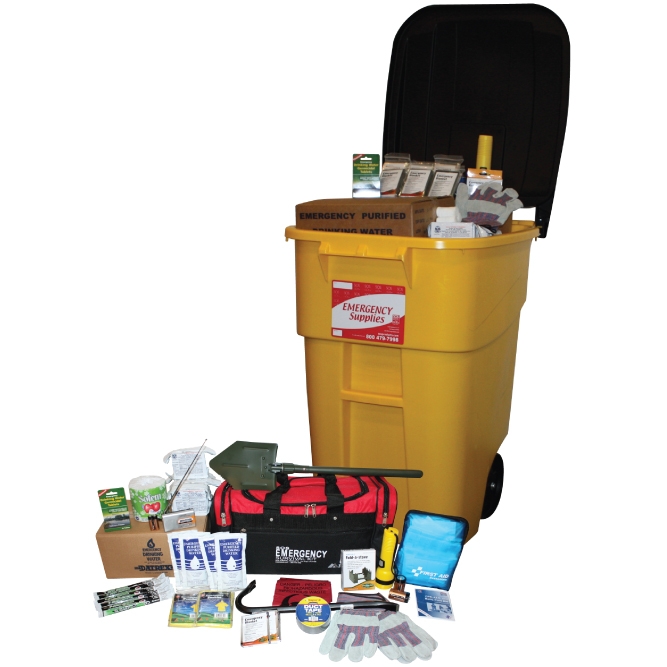Be Ready for Anything: Emergency Preparedness Tips for each Circumstance
Be Ready for Anything: Emergency Preparedness Tips for each Circumstance
Blog Article
Just How to Create an Extensive Emergency Readiness Strategy
In the realm of readiness, establishing an extensive emergency situation strategy is not merely a job to inspect off a list; it is a necessary foundation of any type of company or person's resilience approach. By diligently crafting a plan that addresses numerous facets of emergency situation management, including danger analysis, communication procedures, resource allotment, and strategic decision-making, one can lay a strong foundation for securing procedures, assets, and lives.
Value of Emergency Situation Preparedness
Emergency situation preparedness is vital for mitigating prospective threats and making sure the safety and security of areas and individuals. In today's world, where natural calamities, public health dilemmas, and various other emergency situations can strike without warning, being prepared can make a considerable distinction in lessening the influence of these events. By having a well-thought-out emergency situation readiness strategy in area, individuals and organizations can respond properly, shield lives, and decrease building damage.
Among the main factors why emergency readiness is important is its role in saving lives. Having a plan that outlines clear procedures for discharge, interaction, and emergency situation feedback can assist people act quickly and emphatically when emergencies happen (anonymous). This can avoid injuries and fatalities by making sure that individuals recognize what actions to require to stay risk-free
In addition, emergency readiness boosts the resilience of neighborhoods. By cultivating a culture of preparedness and planning for different circumstances, communities can recuperate extra quickly from catastrophes and disturbances. This resilience is necessary for keeping security, continuity of operations, and overall well-being when faced with misfortune.
Assessing Possible Threats
Taking into consideration the importance of being prepared for unexpected events, the preliminary action in establishing an efficient emergency situation readiness plan includes completely examining and examining prospective threats. This assessment calls for an extensive testimonial of all possible risks that could influence the company, taking into account factors such as location, sector, and historic data on events. By determining these dangers, organizations can prioritize their readiness initiatives and assign resources efficiently to mitigate one of the most considerable dangers.
Usual threats that organizations may encounter consist of natural disasters like floodings, quakes, or typhoons, technological threats such as power outages or information breaches, in addition to human-caused threats like mishaps or deliberate acts of violence. Performing a danger assessment likewise entails thinking about the prospective influence of these events on the company's operations, staff members, clients, and reputation. By performing a detailed danger assessment, organizations can create tailored emergency situation response plans that resolve their particular susceptabilities and ensure efficient preparedness for any type of possible crisis.
Producing an Interaction Plan
Establishing a clear and comprehensive interaction plan is necessary for effective emergency situation readiness within companies. In times of crisis, communication plays a critical function in my link making certain the safety and security and well-being of workers, stakeholders, and the area. A well-thought-out communication plan need to detail clear lines of communication, designate crucial employees in charge of interaction tasks, and develop procedures for distributing info promptly and properly.
One key aspect of creating a communication plan is identifying alternative and key interaction networks (EMERGENCY PREPAREDNESS). These can consist of e-mail, message messaging, phone trees, social networks systems, and public address systems. It is crucial to guarantee that these channels are reputable, easily accessible, and regularly tested to guarantee their effectiveness throughout emergency situations

Structure an Emergency Set
Offered the vital importance of preparedness in times of dilemma, an essential part that organizations need to address is the facility of an emergency situation set. When constructing an emergency package, it is important to take into consideration the particular demands and circumstances of the company. In addition, organizations need to include crucial documents, such as get in touch with checklists, insurance info, and emergency situation response plans, in water-proof containers within the package.
Establishing Emptying Treatments
To guarantee the security and organized discharge of personnel during emergencies, companies must establish clear and efficient evacuation procedures. Evacuation procedures must include an array of possible circumstances, including fires, all-natural disasters, or other emergency situations that need speedy evacuation.

In addition, organizations must develop a system for bookkeeping for all employees throughout an evacuation to make sure that every person has actually safely exited the properties. Interaction plays a vital duty in discharge treatments, with clear instructions on how to evacuate and when to do so. Routine evaluation and upgrading of discharge treatments based on feedback and changing situations are crucial to maintaining the effectiveness of the plan.
Final Thought
Finally, establishing a thorough emergency situation preparedness plan is important for making certain the safety and well-being of people in case of a calamity (EMERGENCY PREPAREDNESS). By evaluating potential risks, creating a communication strategy, constructing an emergency situation set, and establishing emptying people, companies and treatments can be better geared up to respond efficiently to emergencies. It is very important to focus on readiness efforts to reduce the impact of calamities and secure lives and property
In the world of preparedness, developing a thorough emergency situation plan is not just a job to check off a checklist; it is a crucial keystone of any type of organization or person's resilience approach. When emergencies occur, having a strategy that describes clear treatments for evacuation, emergency situation, and communication feedback can help individuals act quickly and emphatically. my review here. By performing a comprehensive danger analysis, companies can create customized emergency situation feedback strategies that resolve their specific vulnerabilities and ensure effective preparedness for any potential crisis
Developing a extensive and clear communication plan is vital for efficient emergency situation readiness within organizations. By evaluating potential risks, creating an interaction strategy, developing an emergency set, and establishing evacuation individuals, organizations and procedures can be much better furnished to respond efficiently to emergency situations.
Report this page